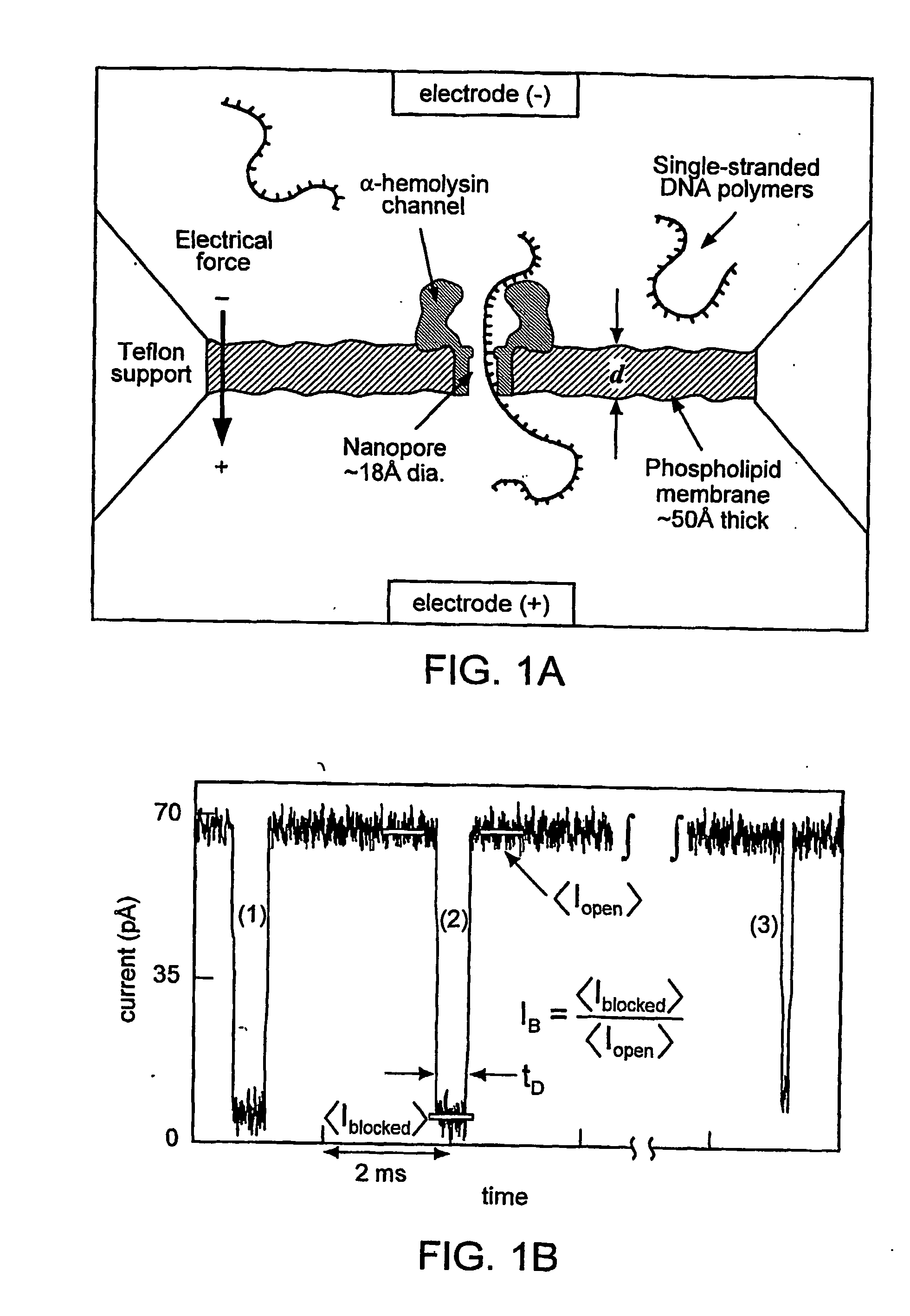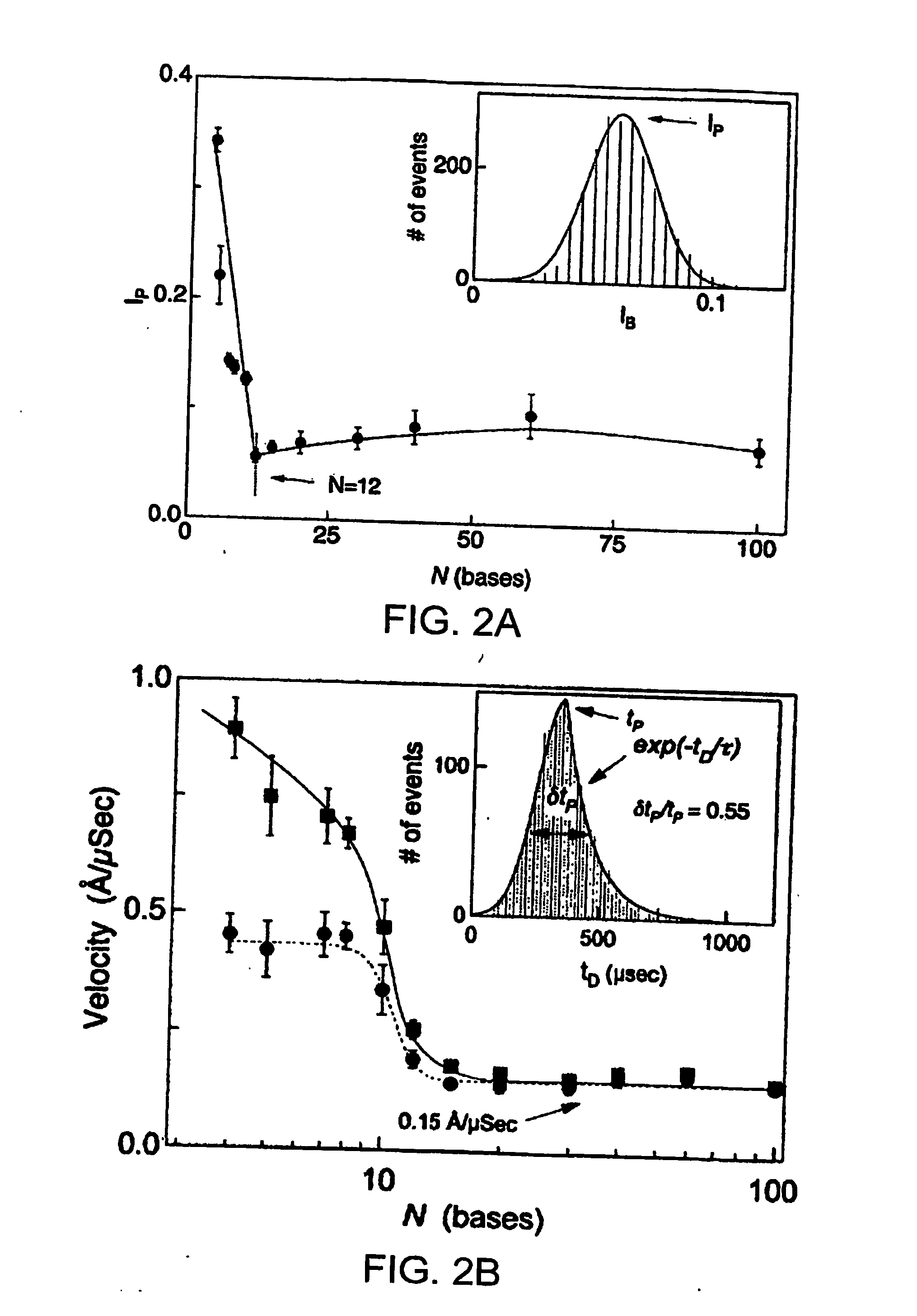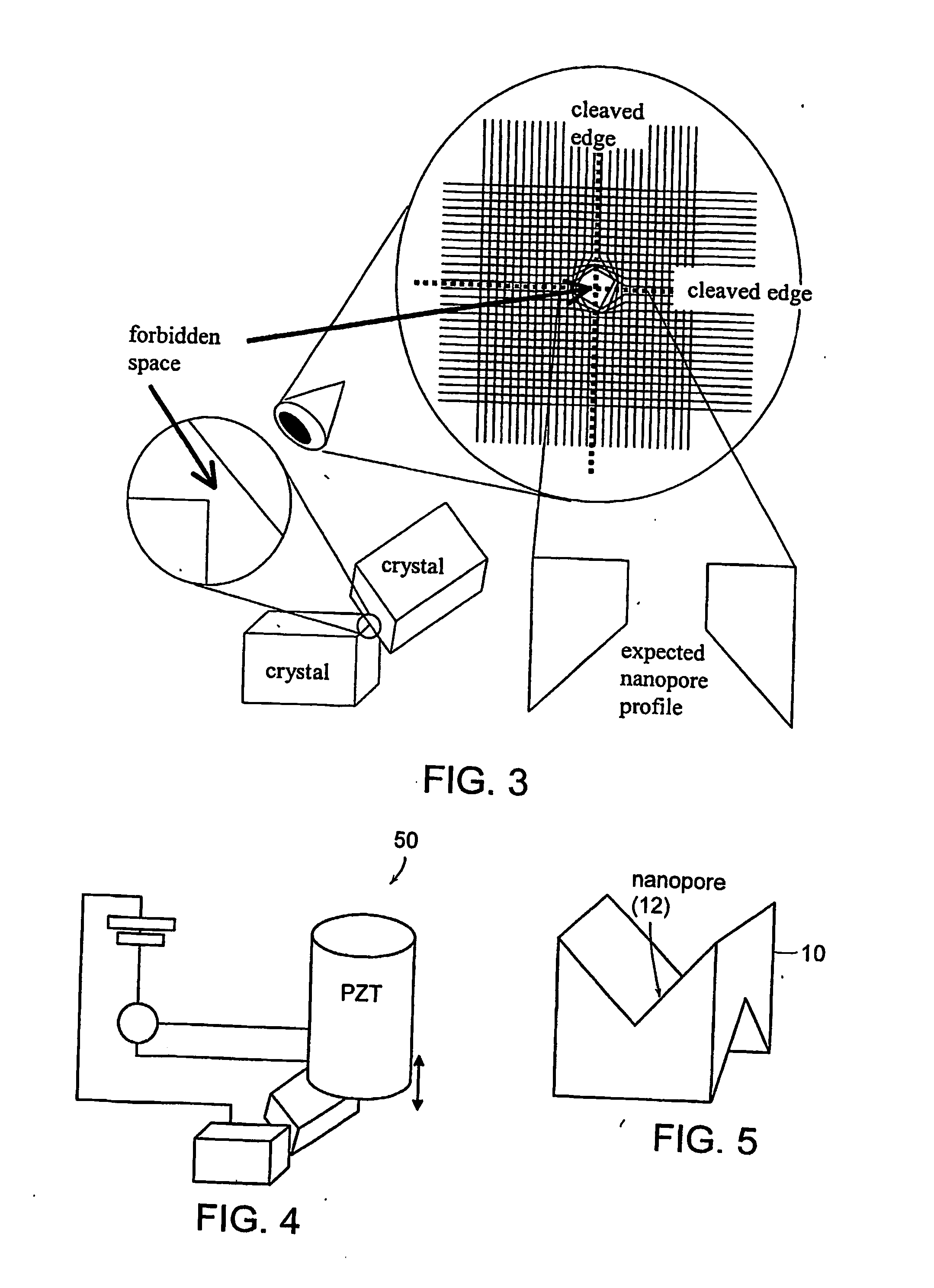Nanopores, methods for using same, methods for making same and methods for characterizing biomolecules using same
a nanopore and nanopore technology, applied in the field of nanopores, can solve the problems of loss of individual nucleotides' ionic conductance, difficult to extract size information from ionic current data, and noise from thermal motion of dna
- Summary
- Abstract
- Description
- Claims
- Application Information
AI Technical Summary
Benefits of technology
Problems solved by technology
Method used
Image
Examples
Embodiment Construction
[0048] Referring now to the various figures of the drawing wherein like reference characters refer to like parts, there is shown in FIGS. 3-5 various views to illustrate the process for making a nanopore insulating member 10, that includes a nanopore 12, according to one aspect of the present invention. More particularly, FIG. 3 is a diagrammatic view illustrating the cutting edges mechanism for forming the nanopore 12 of an insulating member 10 of the present invention using curable polymers; FIG. 4 is a schematic view of an exemplary feedback mechanism for controlling the distance between the two cutting edges of the crystals; and FIG. 5 is a three-dimensional view of a portion of the insulating member 10 after the GaAs crystals are removed.
[0049] According to one aspect of the present invention there is provided a nanoprobe insulating member 10 that is particularly configured and arranged so as to include a nanopore 12 therein that extends across a thickness of the member. In mo...
PUM
| Property | Measurement | Unit |
|---|---|---|
| width | aaaaa | aaaaa |
| pH | aaaaa | aaaaa |
| length | aaaaa | aaaaa |
Abstract
Description
Claims
Application Information
 Login to View More
Login to View More - R&D
- Intellectual Property
- Life Sciences
- Materials
- Tech Scout
- Unparalleled Data Quality
- Higher Quality Content
- 60% Fewer Hallucinations
Browse by: Latest US Patents, China's latest patents, Technical Efficacy Thesaurus, Application Domain, Technology Topic, Popular Technical Reports.
© 2025 PatSnap. All rights reserved.Legal|Privacy policy|Modern Slavery Act Transparency Statement|Sitemap|About US| Contact US: help@patsnap.com



